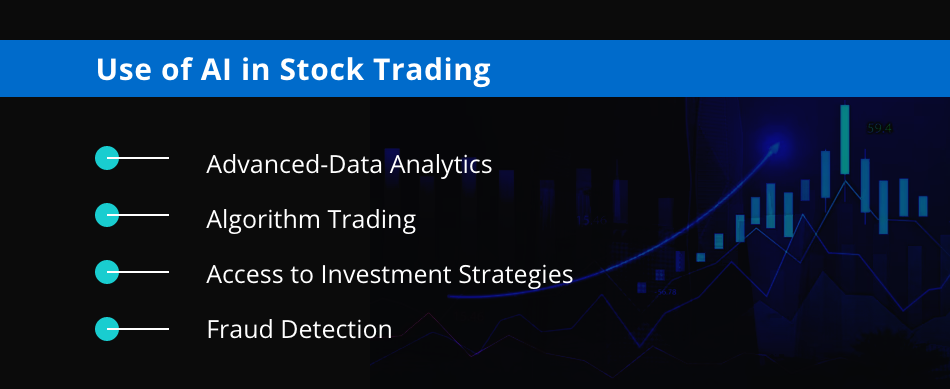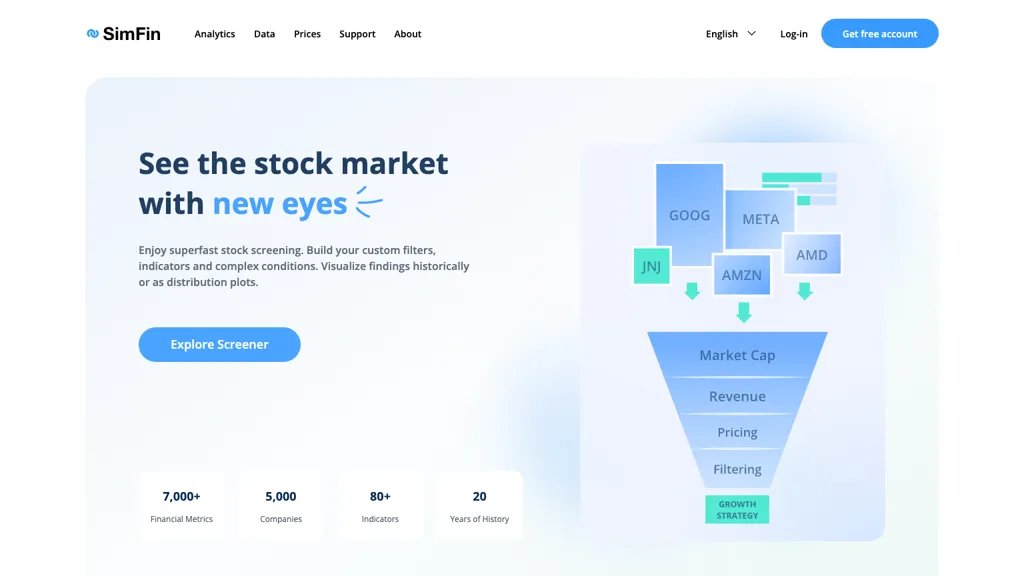20 New Facts To Deciding On AI Stock Predictions Analysis Websites
20 New Facts To Deciding On AI Stock Predictions Analysis Websites
Blog Article
Top 10 Tips On How To Assess The Accuracy And Performance Of Ai Stock Predicting Trading Platforms
You must verify the accuracy of AI trading platforms that predict and analyze stock prices. This will help ensure that you're using a reliable tool. Here are 10 of the best suggestions to help you assess these platforms.
1. Backtesting Results
What to look for: Make sure the platform you choose to use allows you to conduct back-testing to test the accuracy of its predictions based on the past data.
What is the significance of backtesting? Backtesting is a way to verify the validity of an AI model through comparing the predictions against actual results.
Search for platforms that allow you to customize backtesting parameters.
2. Real-time Performance Monitoring
What to look out for: See how the platform's performance is it is compared to the the current market conditions.
What's important Real-time performance is a better indication of the effectiveness of a platform than only the backtesting of the past.
TIP: Sign up for a free trial account or demo account to test the accuracy of market predictions with actual movements.
3. Prediction Error Metrics
What are the indicators to look for Do you look for metrics such as mean absolute error and root-mean squared error, or Rsquared to quantify predictions accuracy.
What is the significance of these indicators are a method to measure how closely the predictions are in line with the actual results.
Tips: Platforms that openly reveal their metrics tend to be more transparent and trustworthy.
4. The rate of success and winning ratio
What to look for Look for the platform's win rate (percentage of predictions that are correct) and success ratio (profitability of trades basing on forecasts).
Why is it Important: High win rates and success ratios show greater predictive accuracy and potential profit.
Be aware that no system can be perfect.
5. Benchmarking Market Indices with Benchmarking
What to Look Out For See if you can compare platform predictions and results to major indexes (e.g. S&P 500, NASDAQ).
Why it is Important This will help to determine if a platform over or underperforming the overall market.
Tips: Don't just look for short-term gains, but also consistent performance over a long time.
6. Consistency of Market Conditions
What to Look for: Evaluate how the platform performs under various market conditions.
Why it matters: A robust platform should be able to perform in a variety of markets, not only under favorable conditions.
TIP: Test the predictions of the platform during periods of volatility or market downturns.
7. Transparency in Methodology
What to Look Out For Know AI models, algorithms, and methods (e.g., neural networks, reinforcement learning).
Why is it important Transparency can help you assess the reliability and scientific rigor.
Beware of platforms that make use of models that are "black boxes" without describing the process by which predictions are made.
8. User Reviews and Independent Tests
What to look for Reviewer reviews, and look for independent tests or third-party assessments of the system.
Why it matters: Independent reviews and tests provide unbiased insights on the platform's accuracy and performance.
Review user comments on forums like Reddit copyright and financial blogs.
9. Risk-Adjusted Returns
What to look out for: Use risk-adjusted metrics such as the Sharpe Ratio (or Sortino Ratio), to gauge the performance of the platform.
Why It Matters: These metrics account for the level of risk taken to achieve returns, providing a more comprehensive view of the performance.
Sharpe Ratio: If it's high (e.g. greater than 1) This indicates higher returns when risk is considered.
10. Long-term track records
What to look for What to look for: Examine the platform's performance over time (e.g. 3 to 5 years).
What is important Why it is Important: Long-term results are an excellent indicator of reliability than the results of the short-term.
Do not use platforms that only showcase results that are short-term or cherry-picked.
Bonus Tip Test on a Demo account
You can test the platform using a free demo account to determine how reliable it is in real-time. This allows you to assess the accuracy and effectiveness of the system on your own.
These tips will help you assess the accuracy and performance AI platforms for stock prediction. This will help you to select a platform that is compatible with your trading goals and risk tolerance. Never forget that no platform can be perfect. Combining AI knowledge with your studies is the best method to choose. Follow the recommended read this post here for using ai to trade stocks for site recommendations including ai stock trading, ai chart analysis, trading ai, ai for stock predictions, stock ai, ai investing, ai trading tools, trading with ai, trading with ai, ai for stock predictions and more.
Top 10 Tips To Assess The Regulatory Conformity Of Ai Stock Analysing Trading Platforms
Regulation compliance is an important aspect to consider when evaluating AI-based trading platforms. Compliance can help ensure that the platform is operating within legal frameworks and protecting user data. These are the top ten tips for assessing regulatory compliance.
1. Verify License and Registration
Regulators: Make sure the platform is registered and licensed by appropriate financial regulatory bodies (e.g., SEC in the U.S., FCA in the UK, ASIC in Australia).
Verify the broker relationship If your platform is integrated with brokers and brokers, make sure these brokers are licensed and regulated.
Public records: Search the regulator's site to determine if the platform has been registered or if it has ever violated the law.
2. Assess Data Privacy Compliance
GDPR - If your website operates in the EU and/or provides services to users in the EU make sure it complies with GDPR.
CCPA For Californian users be sure to check the compliance of California Consumer Privacy Act.
Policies for handling data. Review the platform’s privacy policies and ensure that it clarifies how data about users is collected, shared and stored.
3. Examining anti-money laundering measures
AML policies: Make sure the platform is able to abide by AML policies that are in place to detect and prevent cash laundering.
KYC Procedures: Verify whether the platform has procedures in place to verify the identities of its users.
Monitoring transactions: Find out whether the platform monitors transactions for suspicious activity, and then reports it to the appropriate authorities.
4. Check for Compliance With Trading Regulations
Market manipulation: Verify that the platform is equipped to avoid market manipulation like washing trading, spoofing.
Types of orders: Verify that the platform is in compliance with regulations pertaining to the types of orders (e.g. there is no stop-loss hunt).
The best execution: Ensure that the platform employs top execution methods to make trades at the lowest cost.
5. Cybersecurity Assessment
Data encryption: Verify that the platform protects users' data during its travel and also when it is at rest with encryption.
Response to incidents: Verify that the platform has a plan for incident response in place for cyber-attacks and data breaches.
Make sure to check for any certifications.
6. Transparency and Disclosure
Fee disclosure: Make sure the platform is transparent about all fees that are hidden, as well as any additional fees.
Risk disclosure: Make sure the platform discloses all risks, especially when you use high-risk strategies, or trading using leverage.
Performance reporting: Check if the AI model's algorithms are transparent and properly recorded.
7. Make sure that the product is in compliance to International Regulations
Cross-border Trading: If you're trading involves international markets, you should make sure that the platform you use meets all requirements for regulatory compliance in every region.
Tax reporting: Find out if the platform provides tools or reports that help users comply with tax laws (e.g., FIFO rules in the U.S.).
Sanctions compliance - Make sure that the platform adheres to international sanctions and does not permit trading only with countries or entities prohibited.
8. Examine Record-Keeping and Audit Trails
Transaction records: Ensure the platform maintains accurate records of all transactions to be used for audits and regulatory purposes.
Logs of activity for users (logs): Check to check if the platform records the activities of users, such as transactions and logins. Also, check if the settings for your account have been modified.
Audit readiness: Determine if the platform can provide necessary documentation and logs in case of a regulatory audit.
9. Examine the compliance of AI Specific Regulations
Algorithmic trading regulations: If using a platform that allows algorithmic trading ensure that it is in compliance with relevant regulatory frameworks, such as MiFID II or Reg SCI which are in Europe and in the U.S.
Fairness and Bias: Check for any biases that the platform is able to control and minimize within its AI model. This ensures fair and ethical trade.
Explainability - Ensure that the AI platform can clearly and concisely explain about AI-driven predictions, decisions, etc. as required by specific rules.
Review the User's Feedback and Regulatory Histories
User reviews: Read user feedback to gauge the reputation of the platform's regulator conformity.
Review the regulatory history to see whether there have been any violations to the rules of regulation that were committed, and also fines and penalties.
Third-party Audits: Ensure that the platform is subject to third-party reviews to ensure it is in compliance with all regulations.
Bonus Tips
Legal consultation: Consult an expert on the subject to check if your platform is compliant with regulations.
Trial period: Take advantage of a free trial or demo to evaluate the platform's conformity capabilities and the documentation.
Support for customers - Ensure that the platform is able to assist with any compliance related issues or concerns.
If you follow these guidelines that you will be able to assess the regulatory compliance of AI stock predicting/analyzing trading platforms and ensure that you select an option that is within legal frameworks and protects your interests. It is essential to be in compliance since it not only reduces legal risks, it also increases trust and confidence in the platform. Read the most popular consultant on how to use ai for copyright trading for website advice including stock trading ai, how to use ai for stock trading, ai options trading, ai in stock market, free ai stock picker, best ai stocks, ai share trading, ai stock prediction, best ai stocks, ai share trading and more.